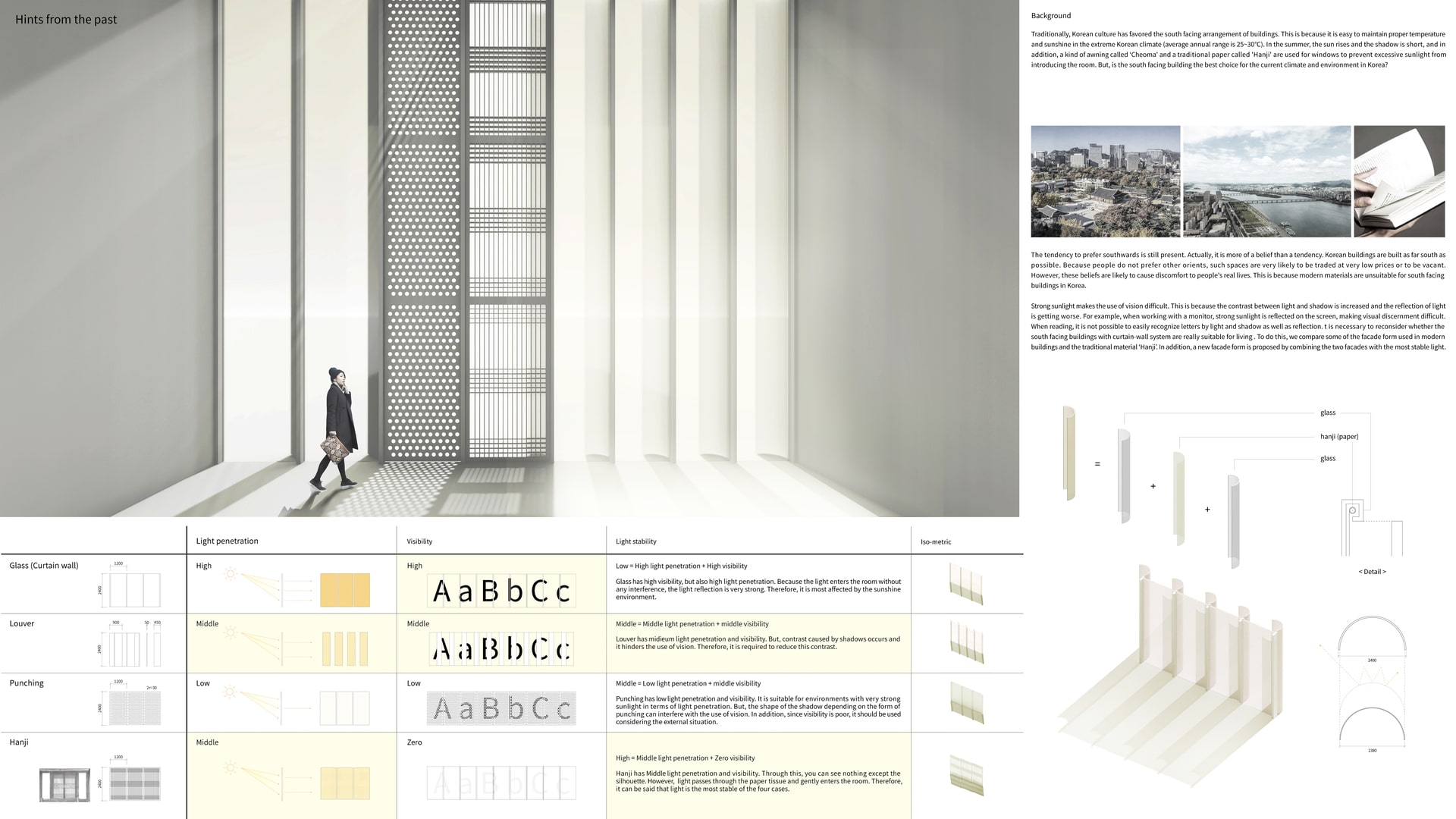Project Description
Traditionally, Korean culture has favored the south facing arrangement of buildings. This is because it is easy to maintain proper temperature and sunshine in the extreme Korean climate (average annual range is 25~30℃). In the summer, the sun rises and the shadow is short, and in addition, a kind of awning called ‘Cheoma' and a traditional paper called 'Hanji' are used for windows to prevent excessive sunlight from introducing the room. But, is the south facing building the best choice for the current climate and environment in Korea? The tendency to prefer southwards is still present. Actually, it is more of a belief than a tendency. This belief is deep-rooted. In general, tradition fades as the younger generation descends but young Koreans still prefer south-facing buildings, especially with respect to residential facilities. Korean buildings are built as far south as possible. Because people do not prefer other orients, such spaces are very likely to be traded at very low prices or to be vacant. However, these beliefs are likely to cause discomfort to people's real lives. This is because modern materials are unsuitable for south facing buildings in Korea. Strong sunlight makes the use of vision difficult. This is because the contrast between light and shadow is increased and the reflection of light is getting worse. For example, when working with a monitor, strong sunlight is reflected on the screen, making visual discernment difficult. When reading a book, it is not possible to easily recognize letters by light and shadow as well as reflection. t is necessary to reconsider whether the south facing buildings with curtain-wall system are really suitable for living . To do this, we compare some of the common facade form used in modern buildings and the traditional material ‘Hanji’. Because it can be the basis for the aforementioned beliefs. In addition, a new facade form is proposed by combining the two facades with the most stable light. Stable light is natural light that is not greatly affected by the external environment. Glass has high visibility, but also high light penetration. Because the light enters the room without any interference, the light reflection is very strong. Therefore, it is most affected buy the sunshine environment. Louver has midieum light penetration and visibility. But, contrast by shadows occurs and it hinders the use of vision. Therefore, it is required to reduce this contrast. Punching has low light penetration and visibility, It is suitable for environments with very strong sunlight in terms of light penetration. But, the shape of the shadow depending on the form of punching can interfere with the use of vision. In addition, since visibility is poor, it should be used considering the external situation. Hanji(Korean traditional paper) has middle light penetration and visibility. Through this, you can see nothing except the silhouette. However, light passes through the paper tissue and gently enters the room. Therefore, it can be said that light is the most stable of the four cases. The new proposal is made by combining Louver and Hanji. This is because Hanji can ease the contrast of light generated when using a louver. In addition, the louver complements the invisibility of Hanji. It is made of glass and paper. Hanji is installed on a glass louver to prevent damage to paper by rain or snow. The shape has the shape of a louver and has a curved shape to reflect light well. This allows the proper amount of light to be taken into the room and the shadow will be less dark due to Hanji. It can be installed in a facility that primarily uses vision. Examples include libraries, classrooms, and offices. If it is installed to be able to rotate, it could be used in more places.
